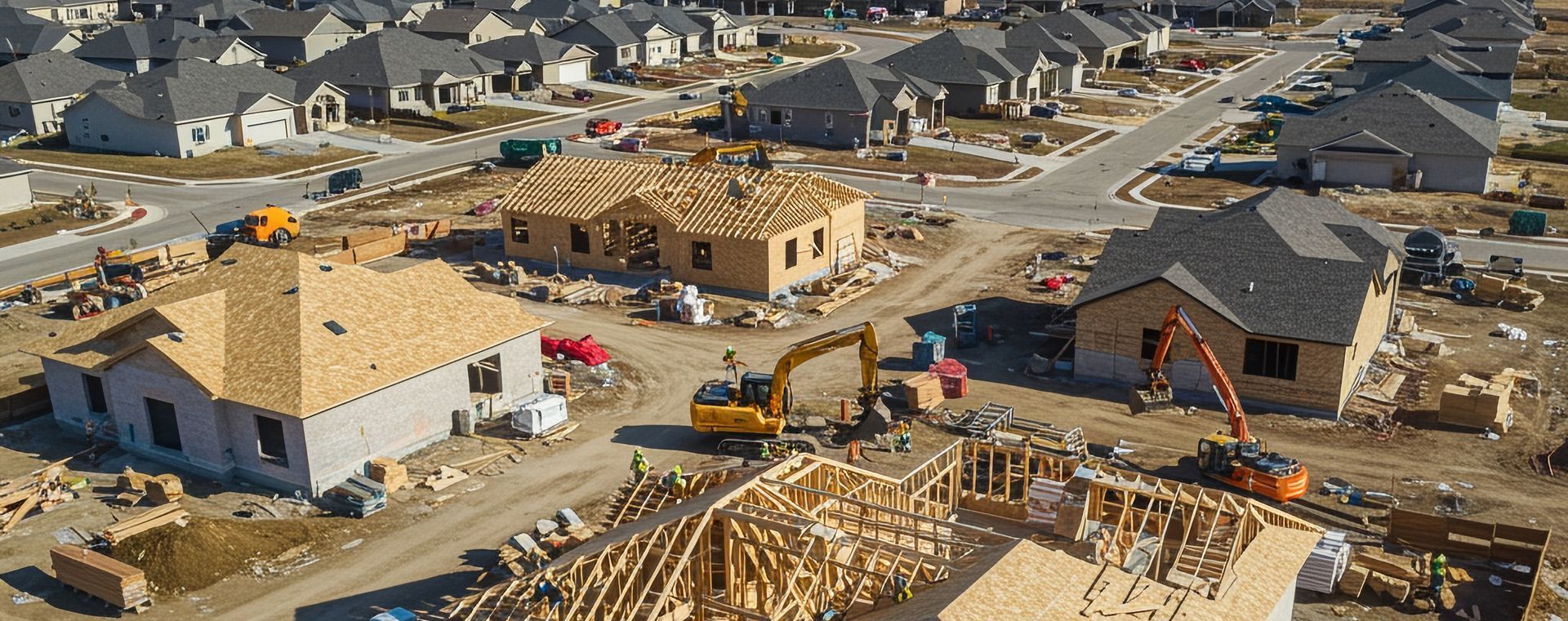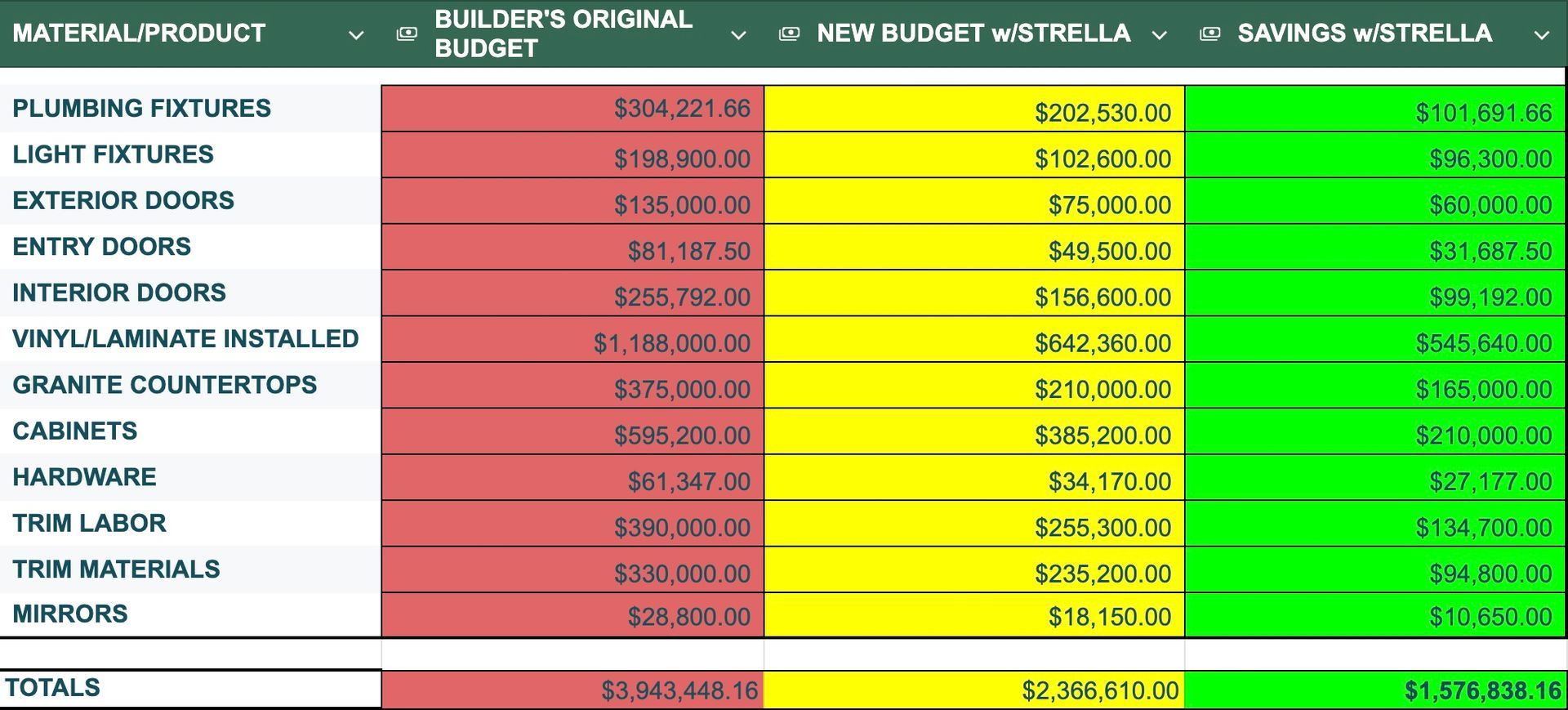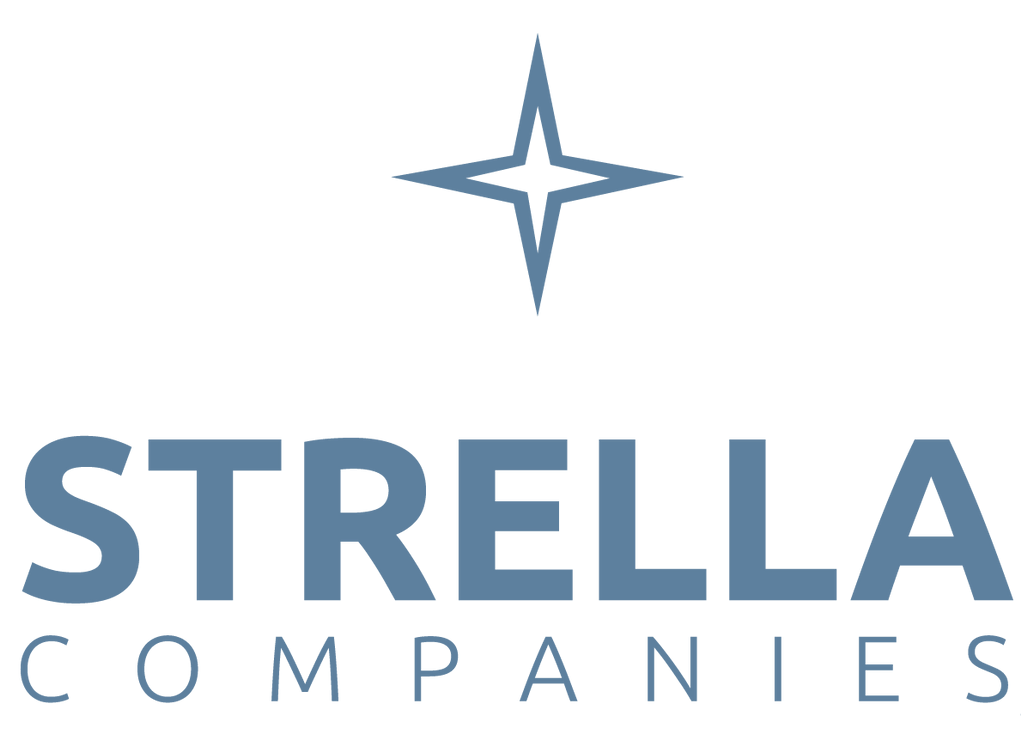How One Developer Increased Return on Cost —Without Cutting Quality
CASE STUDY: 150-UNIT BUILD-TO-RENT PROJECT IN NORTH TEXAS

| Metric | Before Strella | After Strella |
|---|---|---|
| Total Development Cost | $30M | $28.43 |
| Material Savings | - | $1.57M (5.2) |
| Stabilized NOI | $1.50M | $1.50M |
| Yield On Cost (ROC) | 5.00% | 5.26% |
1. OVERVIEW
A build-to-rent (BTR) developer was preparing to construct a 150-unit horizontal rental community, with each home budgeted at $200K, resulting in a $30M total development cost.
The original pro forma projected $1.5M stabilized NOI, equating to a 5.00% Yield on Cost (YoC).
The developer engaged Strella Companies to identify cost efficiencies without reducing specification levels or delaying schedule.
2. SAVING OPPORTUNITIES IDENTIFIED
Strella conducted a line-item review of finish materials and identified over $10,000 per unit in procurement inefficiencies across:
- Cabinets
- Countertops
- Flooring
- Doors & Windows (interior & exterior)
- Light Fixtures
- Plumbing Fixtures (sinks, faucets, toilets, bath)
- Trim, Shelving, and Hardware
- Mirrors and Window Treatments
These savings were not design downgrades — they were achieved by buying smarter, not cheaper.
3. STRELLA SOLUTION
Strella delivered a factory-direct sourcing and logistics package, including:
- Direct-to-developer pricing — eliminating distributor and subcontractor markups
- End-to-end supply chain execution — production, shipping, warehousing, and site delivery
- Tariff mitigation strategies
- Guaranteed lead times and material availability
- Warranty-backed products equal or superior to original specs
- Optional turnkey labor for select categories
All pricing was
dropped directly into the developer’s budget models, enabling
apples-to-apples comparison with existing costs.
4. FINANCIAL IMPACT
Strella reduced total development cost by $1.57M, improving Yield on Cost from 5.00% to 5.26% — a 26 bps lift without touching rents.
CAPITAL STACK IMPACT
Strella’s budget reduction not only improved project returns — it
reduced both debt burden and equity required.
Assuming a typical 75% Loan-to-Cost capital structure:
| Component | Before | After | Impact |
|---|---|---|---|
| Total Development Cost | $30.0M | $28.43M | $1.57M less capital required |
| Loan Amount (75% LTC) | $22.5M | $21.32M | $1.2M less long-term debt |
| Equity Required (25%) | $7.5M | $7.11M | $375K less equity out of pocket |
Less debt to service. Less equity at risk. Same rental income. Higher return on cost.
WHY IT MATTERS
| Outcome | Impact |
|---|---|
| Higher Yield on Cost (YoC) | Stronger project-level return without increasing rents |
| Improved equity efficiency | Less capital is required to hit the same NOI — boosting equity IRR and multiple |
| Better lending optics | Lower basis improves DSCR and LTC/LTV, enhancing loan sizing and approval confidence |
| Enhanced exit valuation | A 26 bps yield improvement today compounds into millions in added value at disposition |
| Design & scope flexibility | Developer can bank the savings or reinvest into higher specs |
BY THE NUMBERS
$1.57M in construction savings = +26 bps YOC improvement = millions in long-term value creation. This is not cost-cutting — it’s capital efficiency.

Strella helped the developer deliver the same rental performance — but at a lower cost basis — resulting in a higher return on cost.

